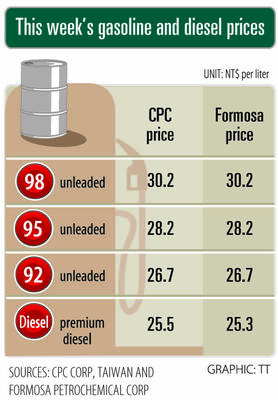With camera phones already sliding into yesterday's news category, digital music is rapidly becoming the new Eldorado of the mobile-phone industry.
"All operators we meet say that the most important service for this year is actually mobile music," said Svante Holm, the head of music sales at Swedish cellphone giant Ericsson.
Damian Stathonikos, Nokia's communications manager in multimedia business, agreed.
"Many operators in Europe are moving towards music services. In North America and South America, everyone sees mobile music as a really good opportunity," Stathonikos said.
The mobile-music bonanza began modestly in 1998 when a small Finnish cellphone operator, Radiolinja, launched the first-ever ring-tone service for world-leading cellphone maker Nokia.
Once revolutionary, those tinny-sounding ring tones are today as good as obsolete, as new third-generation (3G) phones keep pushing the music envelope.
"Mobile phones have more memory space and their performance is rapidly improving," Holm said.
"Now you can fill up your phone with hundreds and hundreds of songs," he said.
With 3G phones today already equipped to play CD-quality music and continuously expanding the storage space available, phone makers hope that they will soon replace other portable music devices like discmans and iPods.
"Most people are not carrying their music devices all the time but they are carrying their phones all the time," Stathonikos said.
Cellphone companies are not only producing handsets with better sound quality and capacity for easy music downloads, they are also joining forces with Internet music providers and mobile operators to offer phone owners a larger range of music choices.
Last month, for example, Ericsson joined forces with online music-swapping pioneer Napster to offer new digital music services for operators.
Having distanced itself from its notorious illegal-download days, Napster will help Ericsson provide the service legally and for a fee.
The two companies will create a common music download platform that is expected to be made available to operators around the world over the next year, starting in Europe, Holm said.
Other cellphone makers have opted for more exclusive music-download alliances.
Greatly anticipated is a new cellphone born out of a partnership between US companies Apple and Motorola and expected to appear within the next couple of weeks.
The phone has been equipped with software-enabling downloads from Apple's iTunes Music Stores, which already supply iPod with its oodles of tunes.
By joining forces with Apple, which holds 70 percent of the global online music market and, especially with their iPod, 75 percent of the high-quality portable music device market, Motorola is all but secured a big bite of the new, piping-hot cellphone music pie.
World mobile-phone leader Nokia is not one to sit on the fence, either. In April, the company announced what it calls its "optimal music device," the N91, which can store 3,000 songs, and is soon expected to announce its own Microsoft-enabled music service using the online music catalogue Loudeye.
According to Nokia's Stathonikos, the company sold 10 million phones with music features last year and expects to sell as many as 40 million this year.
Music videos are also increasingly accompanying the tunes. British operator Hutchison 3G, of the "3" brand, already offers access to 30 million music-video clips as well as a direct link to MTV in the nine countries in which it operates.
Sony Ericsson has also seen its music-enabled K750i fly off the shelves and is soon expected to launch a new phone under its famous "Walkman" brand.
Even if the sound quality remains inferior to the better portable music devices, the phones with the best music quality will undoubtedly do to low-end music devices what camera phones have done to low-end digital cameras: replace them.
Analysts said that while mobile music will be the hot new phone trend, their success may, however, not have a huge impact on sales.
"Prices can't be too high. Customers, especially the young, are not likely to pay a lot for new multimedia services," Enskilda Securities telecoms analyst Mats Nystroem said.

Merida Industry Co (美利達) has seen signs of recovery in the US and European markets this year, as customers are gradually depleting their inventories, the bicycle maker told shareholders yesterday. Given robust growth in new orders at its Taiwanese factory, coupled with its subsidiaries’ improving performance, Merida said it remains confident about the bicycle market’s prospects and expects steady growth in its core business this year. CAUTION ON CHINA However, the company must handle the Chinese market with great caution, as sales of road bikes there have declined significantly, affecting its revenue and profitability, Merida said in a statement, adding that it would

Greek tourism student Katerina quit within a month of starting work at a five-star hotel in Halkidiki, one of the country’s top destinations, because she said conditions were so dire. Beyond the bad pay, the 22-year-old said that her working and living conditions were “miserable and unacceptable.” Millions holiday in Greece every year, but its vital tourism industry is finding it harder and harder to recruit Greeks to look after them. “I was asked to work in any department of the hotel where there was a need, from service to cleaning,” said Katerina, a tourism and marketing student, who would

i Gasoline and diesel prices at fuel stations are this week to rise NT$0.1 per liter, as tensions in the Middle East pushed crude oil prices higher last week, CPC Corp, Taiwan (台灣中油) and Formosa Petrochemical Corp (台塑石化) said yesterday. International crude oil prices last week rose for the third consecutive week due to an escalating conflict between Israel and Iran, as the market is concerned that the situation in the Middle East might affect crude oil supply, CPC and Formosa said in separate statements. Front-month Brent crude oil futures — the international oil benchmark — rose 3.75 percent to settle at US$77.01

RISING: Strong exports, and life insurance companies’ efforts to manage currency risks indicates the NT dollar would eventually pass the 29 level, an expert said The New Taiwan dollar yesterday rallied to its strongest in three years amid inflows to the nation’s stock market and broad-based weakness in the US dollar. Exporter sales of the US currency and a repatriation of funds from local asset managers also played a role, said two traders, who asked not to be identified as they were not authorized to speak publicly. State-owned banks were seen buying the greenback yesterday, but only at a moderate scale, the traders said. The local currency gained 0.77 percent, outperforming almost all of its Asian peers, to close at NT$29.165 per US dollar in Taipei trading yesterday. The